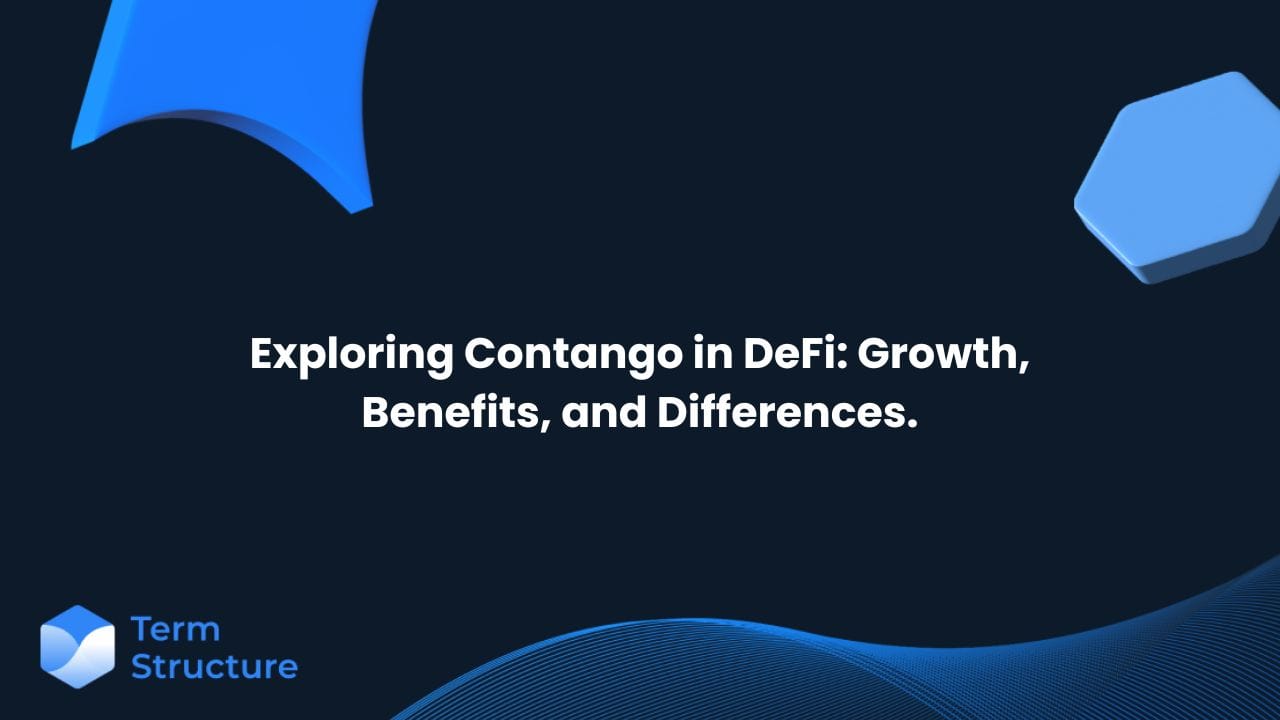Exploring Contango In DeFi: Growth, Benefits And Differences.

Introduction to Contango
New and innovative protocols are reshaping how people interact with DeFi. One project that stands out is Contango, which uses factor and yield products and creative looping mechanisms for repayment. In this article, we’ll explore what Contango does, its unique selling points, and how it fits into the broader DeFi landscape.
What is Contango?
Contango is a DeFi protocol designed to provide leveraged exposure and optimize yields across composable, multi-chain platforms. The protocol stands out by offering a looping solution that helps users maximize their returns by continuously recycling assets or positions. This allows traders and liquidity providers to achieve higher yields, particularly in volatile, high-interest-rate markets.
Contango focuses on aggregating spot and money market liquidity across different blockchain networks, facilitating activities such as:
Using yield-bearing tokens to boost farming rewards
Arbitrage opportunities between varying interest rates
Compounding strategies for staked token yields
Low-cost trading
Through these features, Contango aims to provide DeFi users with composability—the ability to optimize their funds across multiple chains and markets.
Moreover, one feature that sets Contango apart is its looping strategy. In this context, looping involves cyclically using and reinvesting assets to generate higher profits. For a detailed explanation of how looping works, see our article on "Understanding Looping."
Looping is particularly valuable in volatile markets or environments with high staking rewards. For example, if a user is dealing with a volatile token, they can earn more profits as the asset's value increases. Similarly, when staking rewards are high, looping enables users to rebalance their earnings more frequently, maximizing returns in a shorter period.
Contango’s Features and Functions
From creating arbitrage opportunities and multi-chain capabilities to optimizing funding rates, Contango offers a range of tools for users looking to maximize their returns. However, as with any DeFi platform, there are also risks to consider, including leverage, smart contracts, and market volatility.
Arbitrage Opportunities
One of Contango’s standout features is its ability to create interest rate arbitrage opportunities. Users can take advantage of the interest rate differences across various money markets by aggregating liquidity from several platforms. This strategy allows users to capitalize on disparities in borrowing and lending rates between different DeFi platforms.
For example, if borrowing costs are lower on one platform but yields (profits from lending) are higher on another, users can borrow on the cheaper platform and reinvest on the more profitable one to continually generate profits. Contango automates the search for these opportunities, making it easier for users to benefit from them.
Multi-Chain Capabilities
Contango’s strength lies in its multi-chain strategy, as it operates across multiple chains such as Ethereum, Binance Smart Chain, and Avalanche. This versatility sets it apart from protocols like Aave and Compound, which are mostly limited to Ethereum and a few Layer 2 solutions. With access to multiple chains, users can take advantage of better rates, fees, and yield farming opportunities, increasing their potential returns.
Optimized Funding Rates
Another key feature of Contango is its ability to optimize funding rates. By sourcing liquidity from multiple platforms, Contango can offer competitive rates for leveraged trading and borrowing. This reduces the cost of capital, making leveraged positions more rewarding for users.
Risks And Considerations
While Contango offers unique advantages, it’s important to be aware of the risks involved. Leveraged positions and looping strategies can amplify both profits and losses, meaning sudden price changes could lead to liquidation and significant losses. Like any DeFi platform, Contango is also subject to smart contract risks, where vulnerabilities or hacks could result in the loss of funds. Additionally, although Contango's strategies perform well in volatile or high-yield environments, this volatility can also lead to sudden declines in the value of users' positions.
Contango vs Other DeFi Protocols
Many DeFi projects offer leveraged trading, staking, and yield farming, but none have implemented a looping strategy quite like Contango. Now, let’s compare Contango with other DeFi platforms like Aave, Compound, and Yearn Finance to highlight the similarities and differences.
Aave and Compound
Compound and Aave are two of the earliest DeFi lending platforms that allow users to borrow assets by depositing others as collateral. While both platforms allow for the creation of leveraged positions, they do not offer the looping function. Although users can manually borrow and redeposit assets on Aave or Compound, Contango automates this process at a much faster and more optimized rate than what a user could achieve manually.
Unlike Aave and Compound, which primarily operate on Ethereum and layer-2 solutions like Polygon, Contango’s multi-chain strategy makes it more suitable for users interacting with several applications across different blockchain networks.
Additionally, Aave and Compound use variable interest rates, which fluctuate based on supply and demand, potentially driving up borrowing costs. In contrast, Contango pools funds from various sources to achieve the lowest possible funding costs, making it a more cost-efficient option for users.
Yearn Finance
Yearn Finance is designed to aggregate yields using strategies known as vaults. These vaults automate capital management across multiple protocols to generate optimal returns, which is similar to Contango. However, while Yearn focuses primarily on optimizing yield farming, Contango uses leveraged looping strategies, allowing yields to be stacked across multiple chains.
- Composable Strategies: Yearn provides pre-built strategies within its vaults, while Contango enables users to create customized loops across various markets and chains.
- Risk Management: Yearn integrates risk management through its strategy creators, while Contango gives users more direct control over managing their risk.
Contango also differentiates itself from other DeFi protocols like dydx, GMX(v2) etc
Conclusion
Contango has set itself apart in the DeFi space by introducing a unique looping technique that enhances leveraged returns and revenue generation. With access to deep liquidity across multiple chains, optimized funding rates, and strong composability, Contango enables users to maximize their profitability beyond traditional platforms like Aave, Compound, and Yearn Finance. However, it's important to note that its leveraged and looping strategies also come with inherent risks.
For a deeper dive into Contango’s features, visit their official documentation.

